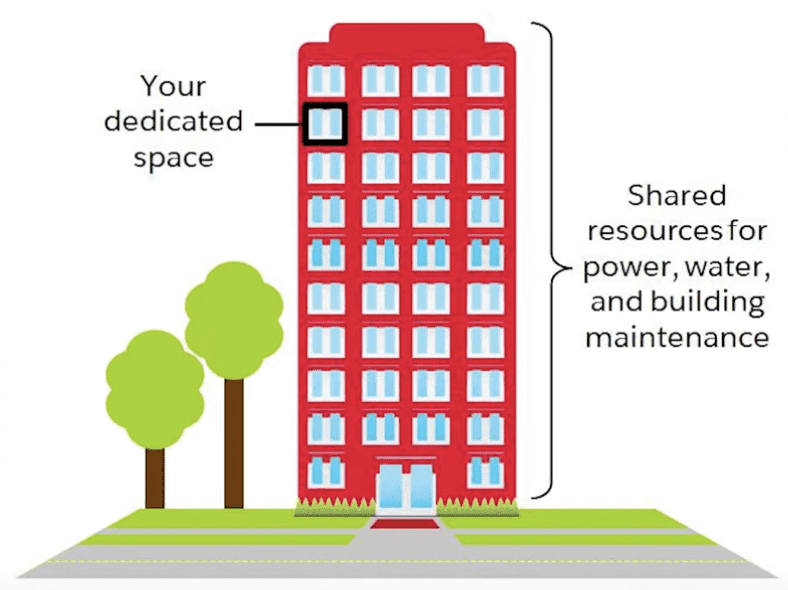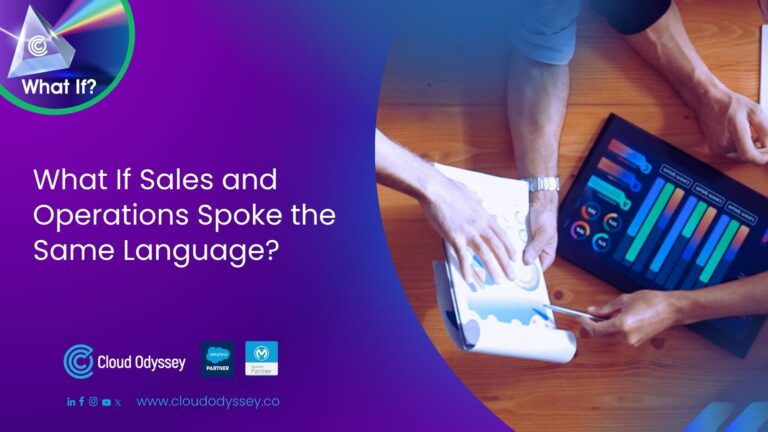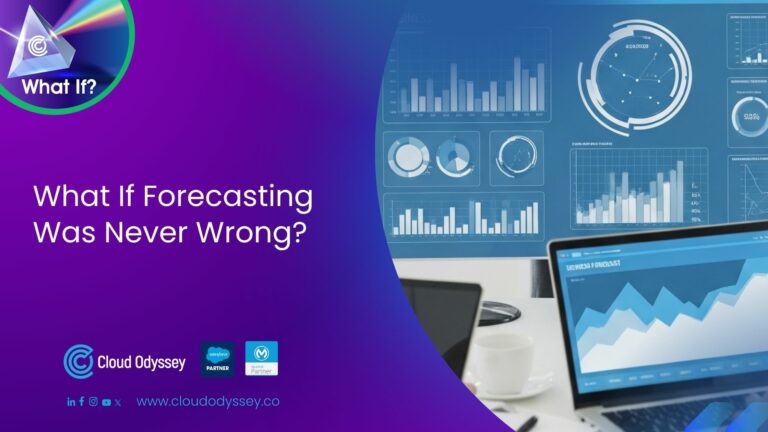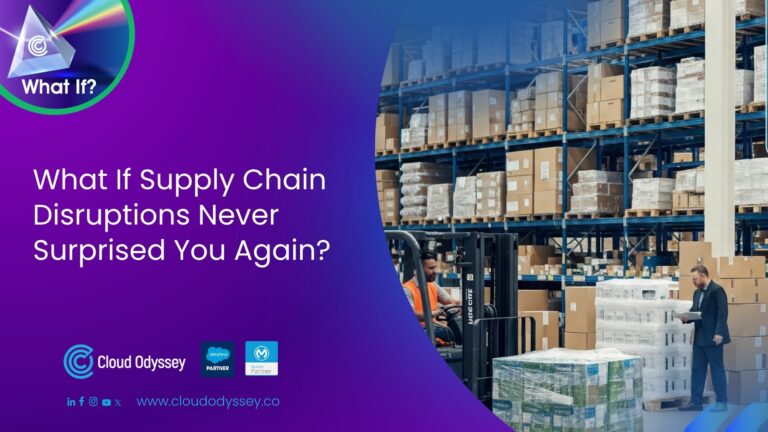A new buzz in Salesforce’s ecosystem
Salesforce launched Hyperforce on December 2, 2020. The announcement was made in a press release on the Salesforce website.
The press release says that Salesforce Hyperforce is a complete redesign of Salesforce’s platform architecture. It is meant to provide the Salesforce Customer 360 experience safely and reliably, which includes the sales cloud, service cloud, marketing cloud, commerce cloud, industries, and other services that use major public cloud platforms.
In this article, we will explore what Salesforce Hyperforce is, its architecture, key features, benefits, compatibility, and security. We will also discuss how to obtain Hyperforce.
Let’s get started!
What is Salesforce Hyperforce?
“Salesforce Hyperforce is a quantum fold. In-house Salesforce can accelerate our global customers digital transformation. And power them to grow fast and scale on our trusted platform.”
Does it sound very high-level?
Here is a simple definition of what hyperforce is:
Salesforce Hyperforce is a groundbreaking advancement in cloud technology that brings unparalleled value and flexibility to businesses and organisations. But what exactly is Salesforce Hyperforce?
In simple terms, Salesforce Hyperforce is a powerful infrastructure architecture that harnesses the capabilities of public cloud providers such as AWS (Amazon Web Services) and Google Cloud. By leveraging the scalability and robustness of these cloud platforms, Salesforce can offer its customers an even more scalable and flexible CRM platform.
It is imperative to understand what the current architecture of Salesforce is all about.
Salesforce Hyperforce Architecture
“Wait! Even before we dive into that, what if I told you that
- Per-transaction limit enhancements:
- The SOQL limit increased from 100 to 300.
- The DML limit increased from 150 to 450.
- Apex static limit expansions:
- The synchronous apex limit was increased from 6 MB to 10 MB.
- The asynchronous apex limit was increased from 12 MB to 20 MB.
Such enhancements would bring immense joy to 90% of Salesforce developers worldwide. As a tech dreamer, I see these changes on the horizon, given the evolving nature of Salesforce.
The architecture of Salesforce Hyperforce is based on five key architectural principles
- Immutable Infrastructure: Hyperforce’s flexible infrastructure is immutable, meaning it cannot be changed once deployed. This makes it more secure and reliable, as there is no risk of changes introducing vulnerabilities.
- Multi-Availability-Zone Design: Hyperforce regions are deployed across multiple availability zones (AZs), which are isolated geographic locations within a cloud provider’s data centre. This ensures that if there is a failure in one AZ, the system will continue to operate in the other AZs.
- Zero-Trust Approach to Security: Hyperforce uses a zero-trust approach to security, which means that no one is trusted by default. All access to the system is strictly controlled, and all traffic is encrypted.
- Infrastructure-as-Code: The Hyperforce infrastructure is defined and managed as code. This makes it easier to deploy, manage, and update the infrastructure.
- Clean Slate: Hyperforce is built on a clean slate, not based on Salesforce’s previous infrastructure. This allows Salesforce to implement the latest cloud technologies and security best practises.
In addition to these five key architectural principles, Hyperforce also features a number of other capabilities, such as:
- Global scalability.
- High availability.
- Security.
- Compliance.
But how is this connected with Hyperforce at all?
Salesforce’s Multi-Tenant Architecture – A tower block analogy
Hang on!! Let me explain a few more things!
Salesforce entered the market with a unique analogy, comparing its platform to a tower block or an apartment building.
In this analogy, anyone can rent a space within the apartment building and pay accordingly. I’m sure you’re familiar with the diagram of a tower block.

Each tenant in this building can utilise shared resources such as water, security, maintenance, and play areas.
Now, let’s consider a scenario where a tenant resides in an individual house and desires dedicated facilities like a play area, security staff, and water connection. The cost of obtaining all of these services individually would skyrocket.
However, in an apartment block, these amenities are balanced out, benefiting everyone and making it cost-effective.
When Salesforce introduced this multi-tenant architecture (apartment building architecture), it gained immense momentum. The idea was so revolutionary that numerous people flocked to Salesforce, resulting in ever-growing demand.
Salesforce’s multi-tenant offerings gained widespread adoption, but they faced limitations due to the tower block architecture that made them so successful. In the long run, maintaining this architecture may prove challenging for Salesforce, at least from an external perspective.
One might wonder about the difficulties Salesforce could encounter in managing an increasing number of clients who adopt their platform. Salesforce has numerous tower blocks, referred to as pods or instances.
There are more than 314 instances or pods encompassing production orgs, sandboxes, Trailhead playground orgs, developer boxes, and industry-specific trail orgs. You can find more information about them at trust.salesforce.com.
I wonder what’s the problem with this.
- Salesforce puts fewer orgs on the production pod or instance.
- And puts more orgs on sandbox pods or instances.
As customers start and want to use more and more resources, features, and functionalities, the capacity of these tower blocks, instances, or pods becomes an issue. (These performance issues are generally not visible to end clients.)
Salesforce sometimes takes an organisation from one instance and puts it into another instance to balance the resources. This is called Org-Split, and customers will be notified accordingly.
But this “Org Split” calls for huge efforts from Salesforce and a little downtime for customers.
Still, the question remains: how does “Hyperforce” fit in here?
Let’s explore the answer together.
The primary goal of Hyperforce is to bring together the fundamental elements of different Salesforce clouds and enable Salesforce to grow quickly by leveraging public cloud partners.
This essentially says that instead of running and maintaining the pods themselves, a salesforce should be utilising other public cloud partners or public cloud providers like Amazon Web Services (AWS), Google Cloud Platform, MS Azure, etc., to run and maintain their pods.
If you’re thinking, What is a public cloud? Here is the answer.
A public cloud is a cloud computing model where a third-party provider makes computing resources, such as servers, storage, databases, networking, and software, available to the public over the internet.
How does this affect Salesforce services for its customers?
- Salesforce Hyperforce will not negatively impact any client’s use cases, integrations, or functions at any instance.
- Hyperforce is an underlying architectural change, and customers of Salesforce wouldn’t change at all on the instances they are working on.
Hyperforce features
- Cutting-edge Security Measures
- Compliance Certifications
- Flexible Data Residency
- Proactive Security Measures
- Enhanced performance and user experience
- Minimised Disruptions
What are the benefits of Salesforce Hyperforce?
- Scalable Infrastructure.
- Global Expansion Opportunities
- Enhanced security and compliance
- Improved user experience.
- Access to a Wide Range of Cloud Services
How do i get Hyperforce?
To get Hyperforce, you need to meet the following requirements:
- You must be a Premier or Signature Success Plan customer.
- You must have an Enterprise, Performance, or Unlimited edition with active licences.
- Your org must be eligible for an upgrade to Hyperforce. Salesforce will notify you several months in advance if your org is eligible.
Once your org is eligible for an upgrade, you can follow these steps to get Hyperforce
- Review the recommended actions to take before you upgrade to Hyperforce. This includes adding Salesforce domains to your allowlist, removing email IP address filtering, and adding a Service Name Indicator (SNI) to the TLS ClientHello message.
- Use the Hyperforce Assistant in Setup to guide you through your upgrade. The Hyperforce Assistant will help you verify your eligibility, prepare your org, and complete the upgrade process.
- Contact your telecom provider to procure and implement a comparable alternative to Salesforce Express Connect (SEC). If you need direct network connectivity to Hyperforce, you will need to do this before you upgrade.
- Review the recommended actions to take before you upgrade to Hyperforce. This includes adding Salesforce domains to your allowlist, removing email IP address filtering, and adding a Service Name Indicator (SNI) to the TLS ClientHello message.
- Use the Hyperforce Assistant in Setup to guide you through your upgrade. The Hyperforce Assistant will help you verify your eligibility, prepare your org, and complete the upgrade process.
- Contact your telecom provider to procure and implement a comparable alternative to Salesforce Express Connect (SEC). If you need direct network connectivity to Hyperforce, you will need to do this before you upgrade.
Here are some additional details about how to get Hyperforce
- Availability: Hyperforce is currently available in a limited number of regions. You can check the Salesforce website to see if your region is supported.
- Pricing: Hyperforce is priced on a per-user basis. The price will vary depending on the number of users and the region.
- Support: Salesforce provides support for Hyperforce. You can contact Salesforce support if you have any questions or problems.
For more information on how to get Hyperforce, please refer to the following resources:
Hyperforce compatibility and integrations
- Backward compatibility: Hyperforce is designed to be backwards compatible with existing Salesforce applications and integrations, ensuring most Salesforce apps, customizations, and integrations will continue to work without changes.
Considerations for migration
- Integration updates: Some integrations may require updates to function properly on Hyperforce, such as adjusting IP addresses used for a connection.
- Customization modifications: Certain customizations relying on deprecated features may need to be modified to utilise the new features available on Hyperforce.
- Data migration: If migrating from a different platform, data migration to Hyperforce may be necessary.
Additional details
- Supported apps: All Salesforce apps, including Sales Cloud, Service Cloud, Marketing Cloud, and Commerce Cloud, are supported on Hyperforce.
- Supported customizations: Most Salesforce customizations are supported on Hyperforce, though some may require updates.
- Supported integrations: Hyperforce supports most Salesforce integrations, but some may need updates to ensure proper functionality.
How Hyperforce handles security
| Security Features | Description |
| Cloud-native architecture | The security of the Hyperforce platform relies on the measures provided by major cloud providers like AWS and GCP, leveraging their cutting-edge security infrastructure and advancements in cloud technology. |
| Compliance certifications | Hyperforce meets strict industry standards and regulations, including SOC 1 and 2, ISO 27001, GDPR, and HIPAA, demonstrating its commitment to maintaining high-level security and data protection. |
| Data protection | Hyperforce enables businesses to define their data residency and choose where their data is stored, catering to organisations with specific compliance requirements or those in highly regulated industries. |
| Multi-layered security | Hyperforce implements encryption at rest and in transit, comprehensive access controls, and user permissions to ensure that only authorised individuals have access to sensitive data, reducing the risk of unauthorised access or data breaches. |
| Proactive threat detection | Hyperforce uses cutting-edge machine learning and artificial intelligence technologies to find and stop security threats. This lets businesses fix potential holes before they become big problems. |
| Physical security | Hyperforce protects customer data against physical threats like natural disasters or power outages through the presence of multiple data centres in different regions. This also improves performance and the user experience by optimising routes between users. |
| Regular maintenance windows | Hyperforce schedules regular maintenance windows to ensure the reliability and availability of the platform, with careful consideration to minimise disruptions to businesses and their operations. |
| Least privilege | Users are only granted access necessary for their job, reducing the risk of unauthorised access to sensitive data. |
| Zero trust | Hyperforce follows a zero-trust approach, requiring verification for all data access, even in cases of compromised credentials, to prevent unauthorised access. |
| Encryption | Data is encrypted at rest and in transit, protecting unauthorised access even if intercepted. |
| Physical security | Hyperforce data centres maintain strict physical security measures, limiting access to authorised personnel only. |
| Regular security audits | Hyperforce undergoes regular security audits to evaluate and ensure the effectiveness of its security measures. |
| Security monitoring | Salesforce has a team of security experts responsible for monitoring the platform and identifying potential threats and vulnerabilities. |
| Data residency | Customers can choose the location where their data is stored, giving them more control over data privacy. |
| Transparency | Salesforce maintains transparency by providing customers with information about its security practises and data protection measures. |










